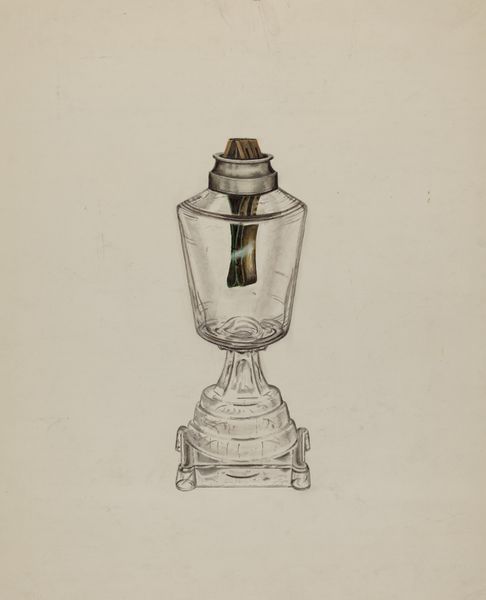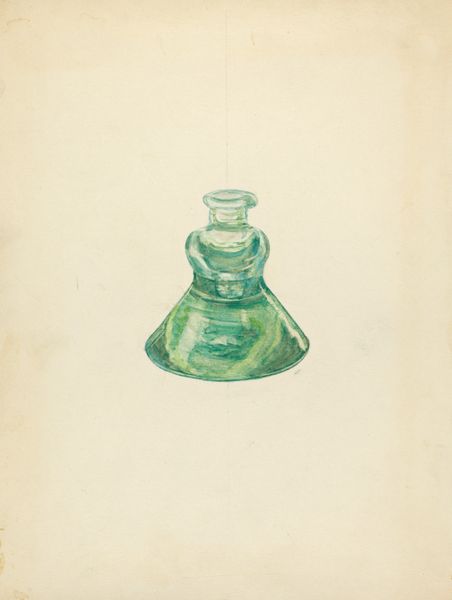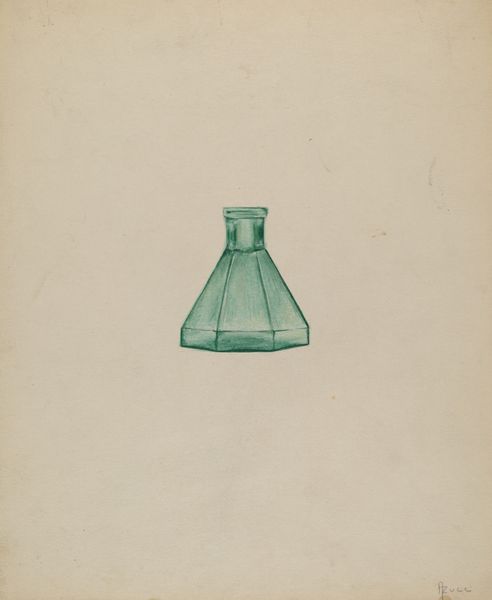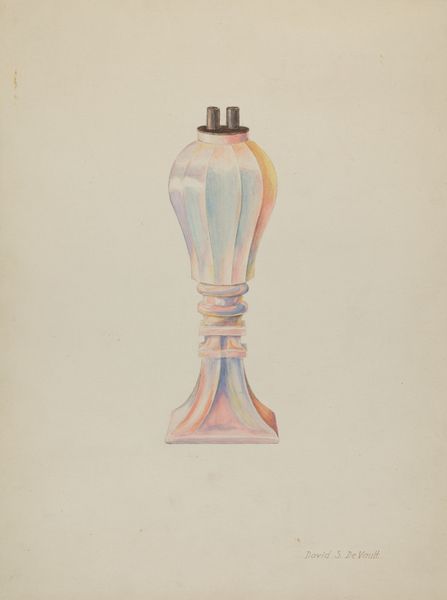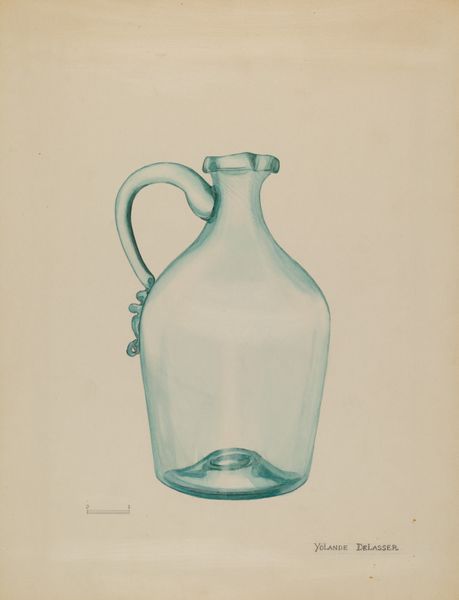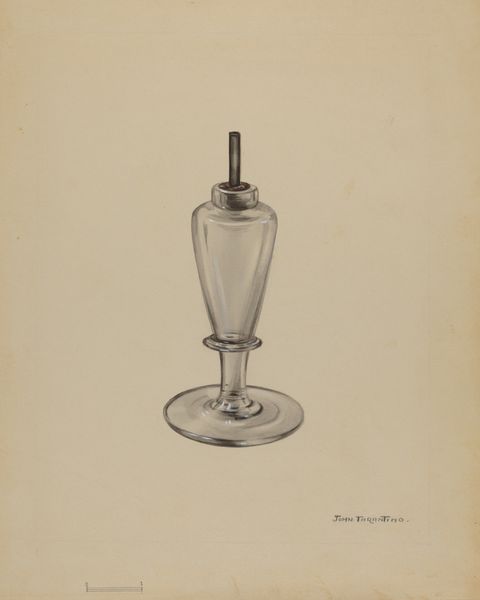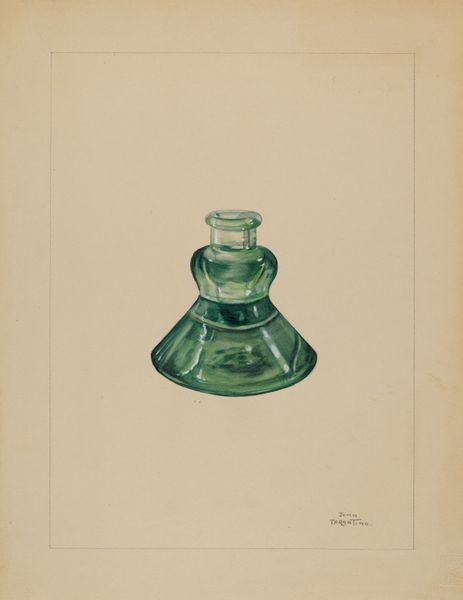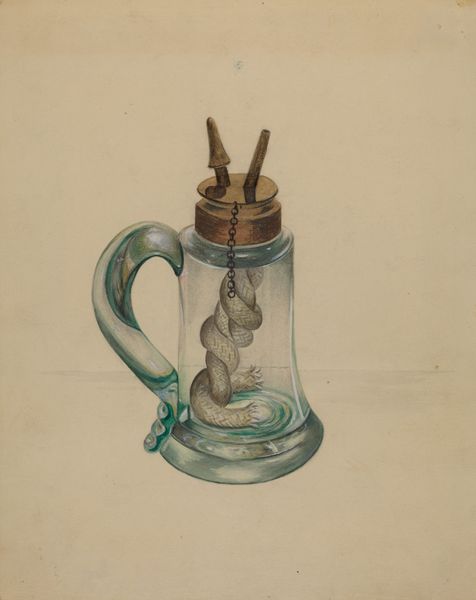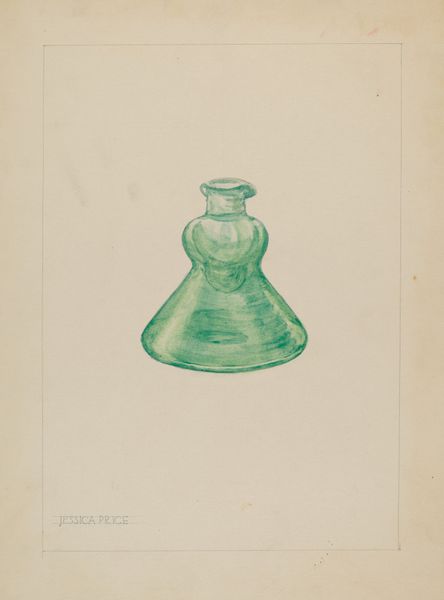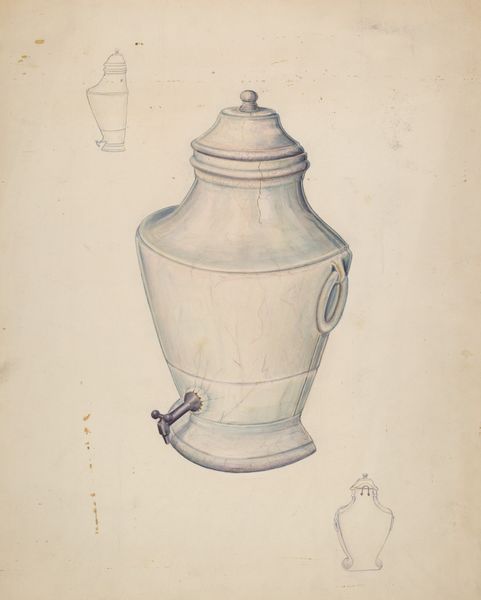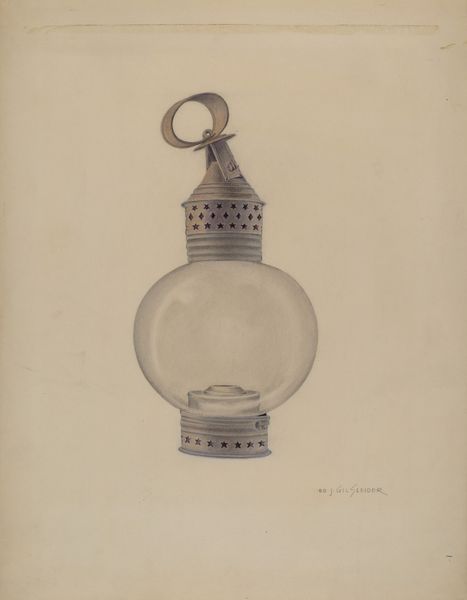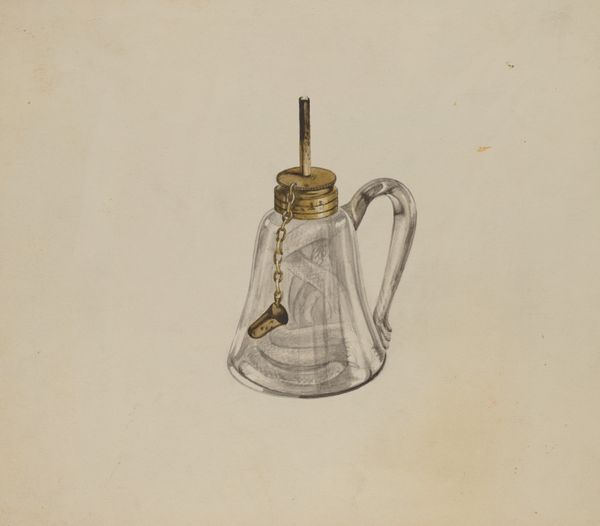
drawing, watercolor
#
drawing
#
watercolor
#
watercolor
Dimensions: overall: 35 x 24.4 cm (13 3/4 x 9 5/8 in.) Original IAD Object: 4 5/8" high; 2 5/8" wide
Copyright: National Gallery of Art: CC0 1.0
Curator: This is Harry Grossen's "Glass Camphene Lamp," a watercolor and drawing executed around 1937. It depicts, rather straightforwardly, a lamp. Editor: My first impression is one of unexpected beauty in something so utilitarian. The transparency of the glass, rendered in watercolor, is just lovely. Curator: The choice of watercolor is interesting, don't you think? It certainly highlights the delicate nature of the glass, almost giving it a precious quality. It really elevates this ordinary household object. We’ve often looked at this artist’s treatment of other functional designs. He definitely focused on form, the means by which industrial progress could touch all segments of society. Editor: Absolutely. And let's think about camphene itself. As a fuel, it bridges a moment in history, doesn’t it? Somewhere between whale oil and kerosene and electricity. Lighting a home or a workplace carries a certain weight. Was camphene labor intensive? Did that make this artwork reflect its economic considerations? Curator: Precisely. Consider the accessibility. Camphene lamps represented a move towards cheaper, more readily available lighting for working-class homes. But this wasn’t universally praised. Some saw these “advances” as vulgar. What Grossen does, though, is remove any potential stigma of mass-produced goods with what is, really, fine art. He dignifies the commonplace. Editor: Yes, you've identified an important transformation occurring here. Also, it is an elegant work in and of itself. The lamp stands as an icon representing societal shifts around the late Depression era. Curator: It speaks volumes, doesn't it, about our changing relationship with material culture? Seeing the image rendered in such detail also calls to mind how different museum-going or looking was back then. How the common observer experienced mass design! Editor: A thought-provoking perspective. Harry Grossen invites us to see the simple, often-overlooked objects that subtly alter how we experience a new century. Curator: It makes you wonder, doesn't it, what future generations will immortalize from our time in watercolors.
Comments
No comments
Be the first to comment and join the conversation on the ultimate creative platform.
